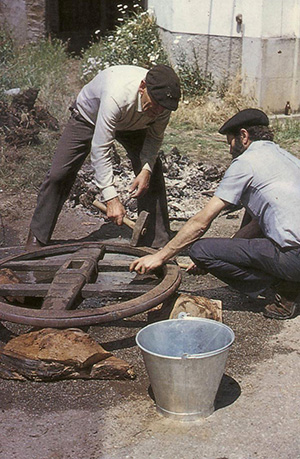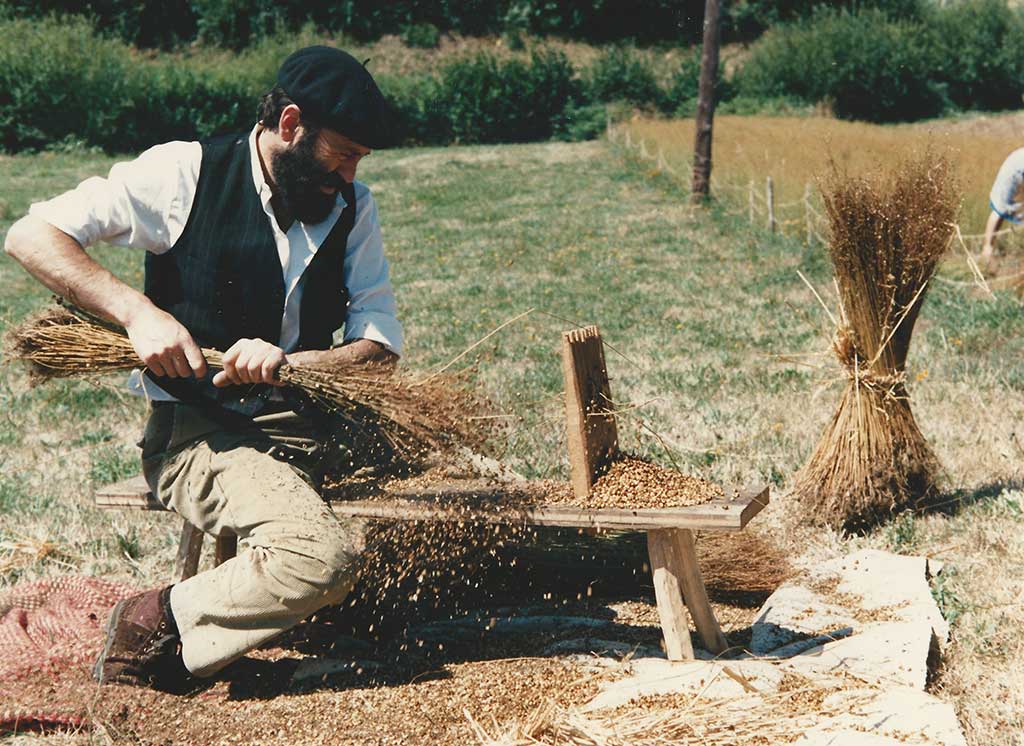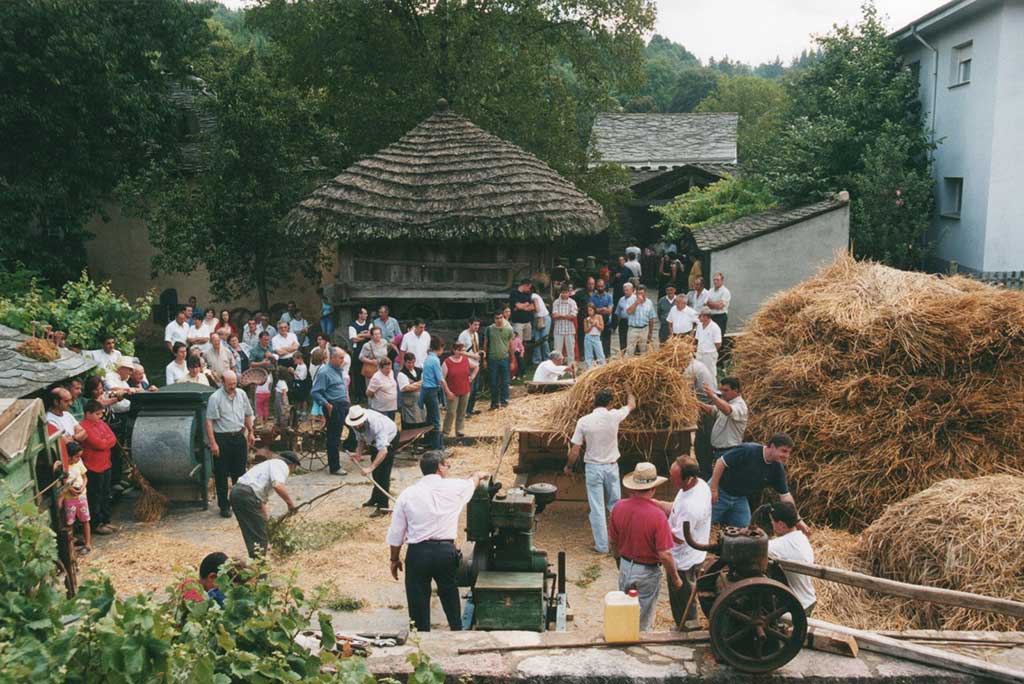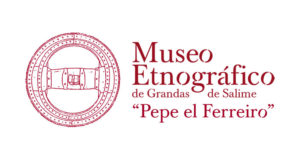12.01. Pepe el Ferreiro Hall
 José María Naveiras Escanlar “Pepe el Ferreiro” (31 March 1942, Grandas de Salime – 13 June 2020, Belmonte de Miranda) was born and grew up in a peasant family with a long tradition of ironworkers.
José María Naveiras Escanlar “Pepe el Ferreiro” (31 March 1942, Grandas de Salime – 13 June 2020, Belmonte de Miranda) was born and grew up in a peasant family with a long tradition of ironworkers.
Because of his work in the metal workshop in Grandas de Salime, Pepe often visited the houses in the local area, where it was common to find abandoned tools and equipment. With no definite idea yet of what to do with them, he began to collect pieces that, having lost their use, had become old junk or “trastos vellos”, condemned to abandonment or fire.
His natural curiosity was not limited simply to rescuing ethnographic pieces. From the outset, his vision of heritage was a broad one, transcending that of the collector who merely wishes to accumulate artefacts, taking an interest in production processes, the structure of the territory and the recovery of trades, activities, techniques and aspects of culture, knowledge and know-how that were being lost at an even faster rate than the actual artefacts themselves.
In 1979, José María Naveiras was already aware of the need to gather, organise and continue saving all this heritage, so he approached Atanasio Corte Zapico, at that time the Councillor for Culture and Sports in the Asturian regional government, and Emilio Marcos Vallaure, a great connoisseur of western Asturias and a man who was to play an important role in the creation of the museum.
It was not until several years had passed, with more than a few setbacks, that on 2 June 1984, the first part of what was then called the Ethnographic Museum of Grandas de Salime was inaugurated on the ground floor of the Grandas de Salime Town Hall. In total, four rooms in which the ethnographic repertoire collected until then was installed, as well as a display of archaeological material gathered by Pepe. The available premises limited the possibilities of expansion and conditioned the development of the rhetoric, but the main lines of the argument that would later be more widely deployed were already present: the recreation of environments, the real use of the pieces, the integration of local artisans in the project, and the involvement of neighbours and figures from all walks of life who would favour the creation of the Association of Friends of the Ethnographic Museum of Grandas de Salime.
In 1989, the collection was moved to the old Rectory House of Grandas de Salime, a 19th century building that was fitted out as a museum after a refurbishment in which structural elements recovered by Pepe and various local residents from the ruins of the villages flooded by the Salime reservoir were exhibited.
The new location was in itself a heritage element that showed the structure of traditional houses and allowed the exhibition area to be enlarged, developing José María Naveiras’ concept of a “living museum” with fewer restrictions. Demonstrations of traditional crafts and activities, workshops and seminars followed one after the other, thus consolidating the participation of craftsmen and local people in the institution’s daily activities.
It became clear that the museum needed to grow, so it was extended with new buildings in the traditional architectural style. A water mill was installed, which for years provided a service to the villagers interested in using it and the Museum also gained space for its internal activity with a metal and carpentry workshop and areas for temporary exhibitions, activities and offices. In 2004, the newly built chapel was inaugurated, the final milestone in a period of constant growth.
Although he did not achieve his initial aspirations, José María Naveiras managed to materialise the concept of a comprehensive and living museum, the final result being a brilliant recreation of the domestic spaces and productive activities as his chronicler had known them.
The Museum we enjoy today is Pepe’s tangible legacy. Unanimously celebrated as one of the best of its kind, with an enormous collection of material, it served and continues to serve as an example and inspiration for the creation of other museums, both in Asturias and everywhere else.
Pepe el Ferreiro’s true legacy that will reach generations is, like the heritage he always wanted to preserve, intangible. The project has become one of the main catalysts of feelings of respect generated among the neighbours themselves for past, but not so distant, ways of life, which were reviled by their own protagonists because they were burdened for generations by backwardness, misery and social deprivation. Time and the unquestionable success of the Museum have helped to radically change the secular disdain for what is our own and have accentuated the respect for the assets that make it possible to recreate that world that became extinct in a few decades and which today is claimed as a shared reference point and a source of collective pride.
More information:
PANEL 1. The decline of peasant society.
PANEL 2. Those trastos vellos.



